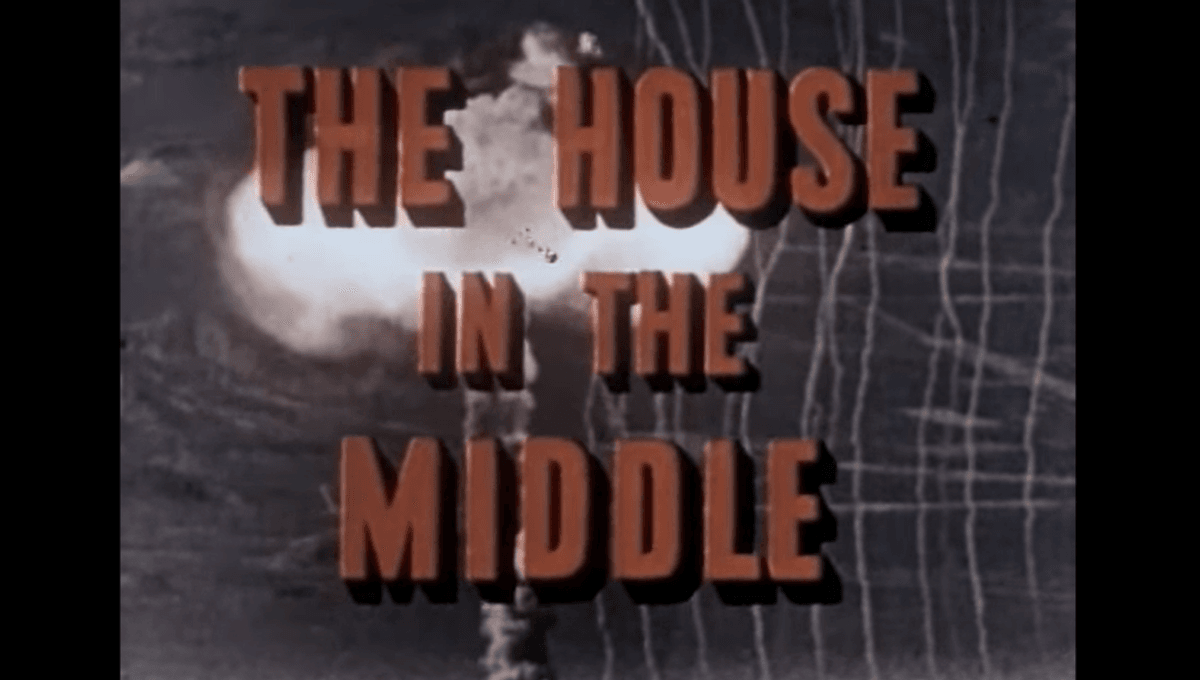
Painting your house white has been suggested as a way to cool down buildings and cope with heat waves, which are becoming increasingly common during the climate crisis. However, in the 1950s, Americans were being advised that keeping their homes tidy and freshly painted white could increase their chances of survival for an altogether different reason: the looming threat of an atomic bomb.
During the Cold War when the United States and Soviet Union were locked in a nuclear arms race, the threat of an atomic bomb was very real. In the early 1950s classroom, Bert The Turtle was teaching students duck-and-cover drills to protect themselves in the event of a nuclear attack. Of course, a classroom desk is going to do little if you’re in close proximity to the blast, but it was hoped it might help in cases where the blast was some distance away.
When an atomic bomb goes off creating a nuclear explosion, the shockwave of devastation travels through the environment in different ways. Most of the damage comes from the blast itself, but around 35 percent of the energy from a nuclear explosion comes from thermal radiation, or heat.
The heat is so intense that objects close enough to the center of the blast are vaporized, as in the case of the curious “Rope Trick Effect”.
“High-speed imaging of the early nuclear tests showed a strange mottling of the fireball surface. This was found to be caused by vaporization of steel guy ropes holding the bombs in place,” Dr Sam Rigby, an expert in blast and impact engineering, and senior lecturer in Civil and Structural Engineering at the University of Sheffield, told IFLScience. “So significant is the thermal radiation from a nuke that US citizens during the Cold War were encouraged to keep their houses clean and freshly painted to reduce the risk of them catching fire!”
In an instructional video called The House In The Middle, a series of experiments appear to demonstrate how a well-kept home can reduce the risk of total atomic destruction for American homeowners. “The dingy house on the left. The dirty and littered house on the right. Or the clean, white house in the middle,” it said. “It is your choice. The reward may be survival.”
The flash of light and heat from a nuclear explosion spread through the environment before you even hear a peep of the bomb going off. This is because radiation travels at the speed of light, considerably faster than the speed of sound. It’s similar to the way in which lightning comes before the sound of thunder.
Experiments that feature in the video demonstrate this as a flash of light accompanied by heat so intense that some of the model houses had already burst into flames before the blast itself had taken effect. The video then claims that keeping houses tidy, free of extra tinder like dead leaves and wood, and covered in a fresh lick of cooling white paint will reduce the risk of it being burned to the ground.
In reality, painting your house bright white is about as likely to protect you from a close-proximity nuclear blast as ducking-and-covering with Bert The Turt. That said, as Atomic Theater reports, cameras at the Nevada Test Site did show that lumber without an exterior varnish was a lot quicker to catch fire compared to treated wood following an atomic blast. It was this footage that features an original black-and-white version of The House in the Middle in October of 1953, at that time sponsored by the Federal Civil Defense Administration.
An amended version that was longer and had a stronger focus on freshly painted homes and tidy interiors was released a year later, sponsored by… drum roll, please… The National Paint, Varnish And Lacquer Association. Capitalizing on the threat of nuclear attack for advertising opportunities was actually pretty common at the time as brands and companies found creative ways to shoehorn their products into the nuclear discourse.
So, if you think the Barbie marketing team took things too far, just be thankful we’re not dealing with the publicity machine of 1950s America. The last thing the climate crisis needs is product placement.
Source Link: Why The Atomic Bomb Threat Had Americans Painting Their Houses White In 1954